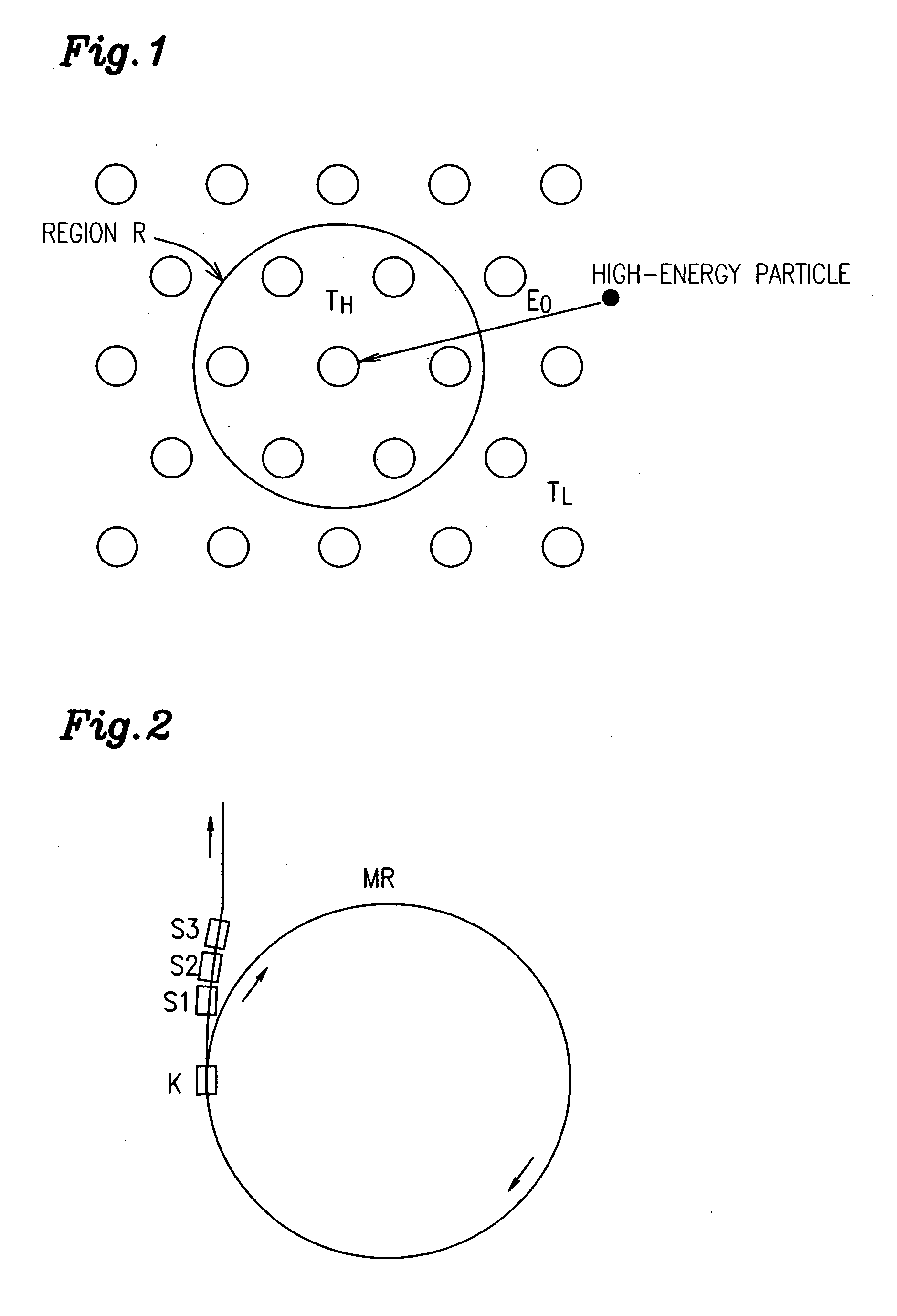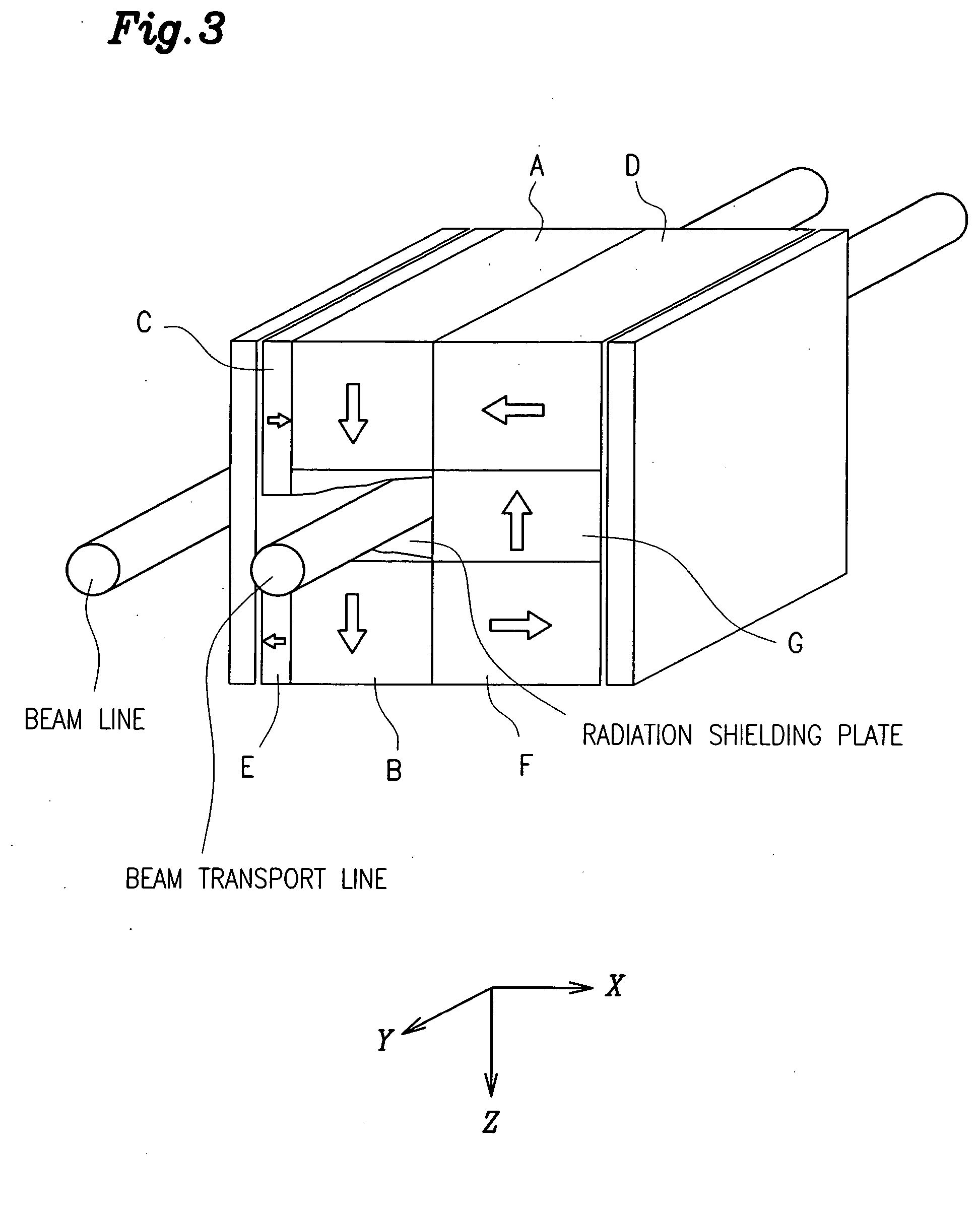Permanent magnet for particle beam accelerator and magnetic field generator
a technology of permanent magnets and accelerators, applied in the field of permanent magnets, can solve the problems of large current needs to be supplied, damage to respective members, and joule heat generated by coils
- Summary
- Abstract
- Description
- Claims
- Application Information
AI Technical Summary
Benefits of technology
Problems solved by technology
Method used
Image
Examples
example 1
[0071] First, an R-TM-B based material powder, having a composition including Nd, Dy, B, Fe and inevitably contained impurity elements as shown in the following Table 1, was prepared. The powder had a mean particle size of 3.0 μm. This powder was compacted under a magnetic field and then sintered at 1,060° C. for 4 hours within a vacuum, thereby obtaining a sintered magnet material. A sample piece was taken from the sintered magnet material, magnetized and then its magnetic properties were measured at room temperature. The results are shown in the following Table 2, which additionally shows the Curie temperature (Tc) of each sintered magnet material.
TABLE 1Magnet composition (mass %)No.NdDyBFeExamples121.010.01.0Balance223.57.51.0Balance326.05.01.0BalanceComparative428.52.51.0BalanceExamples531.0—1.0Balance
[0072]
TABLE 2CurieBrHcJ(BH)maxtemperatureNo.(T)(MA / m)(kJ / m3)(° C.)Examples11.152.425531621.212.027931631.261.6303316Comparative41.331.3342318Examples51.390.9374316
[0073] Next, t...
example 2
[0080] First, an R-TM-B based material powder, having a composition including Nd, Dy, B, Fe and inevitably contained impurity elements and having a mean particle size of 3.0 μm, was prepared. This powder was compacted under a magnetic field and then sintered at 1,060° C. for 4 hours within a vacuum, thereby obtaining a sintered magnet material having a composition including 28.5 mass % of Nd, 2.5 mass % of Dy, 1.0 mass % of B, 1.0 mass % of Co, and Fe as the balance. A sample piece was taken from each of these sintered magnet materials, magnetized and then its magnetic properties were measured at room temperature. The resultant magnetic properties included a Br of 1.33 T, an HcJ of 1.3 MA / m and a (BH)max of 342 kJ / m3.
[0081] Next, the resultant sintered magnet material was machined to obtain rectangular parallelepiped magnets. Then, those magnets were magnetized. A magnetic field generator having the configuration shown in FIG. 3 was assembled of the magnetized rectangular parallele...
PUM
| Property | Measurement | Unit |
|---|---|---|
| Percent by mass | aaaaa | aaaaa |
| Percent by mass | aaaaa | aaaaa |
| Percent by mass | aaaaa | aaaaa |
Abstract
Description
Claims
Application Information
 Login to View More
Login to View More - R&D
- Intellectual Property
- Life Sciences
- Materials
- Tech Scout
- Unparalleled Data Quality
- Higher Quality Content
- 60% Fewer Hallucinations
Browse by: Latest US Patents, China's latest patents, Technical Efficacy Thesaurus, Application Domain, Technology Topic, Popular Technical Reports.
© 2025 PatSnap. All rights reserved.Legal|Privacy policy|Modern Slavery Act Transparency Statement|Sitemap|About US| Contact US: help@patsnap.com



